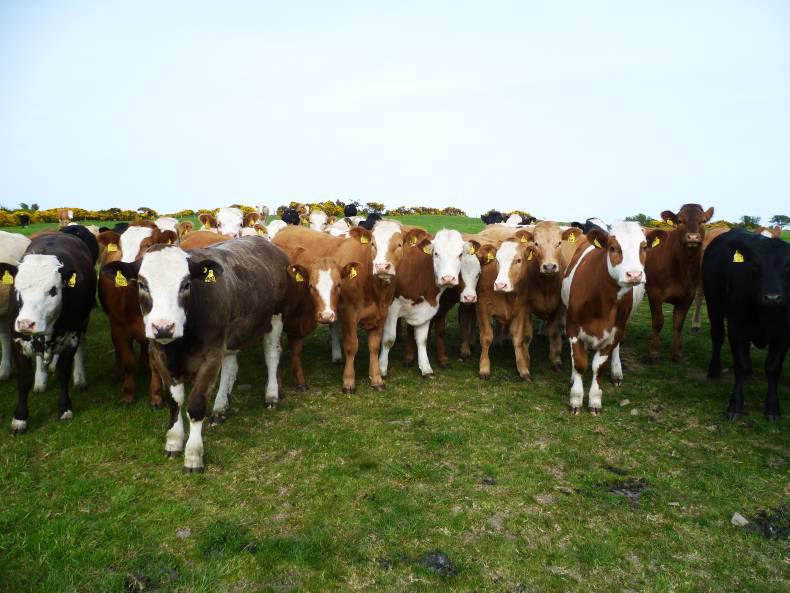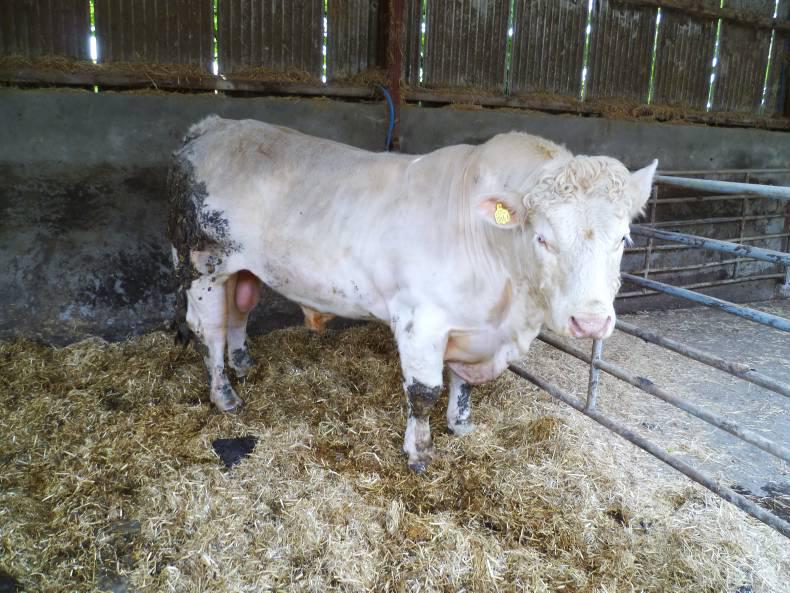Last week, farmers involved in the NI suckler beef programme (NISBP) visited the farm of Artie Birt in Portaferry. The main aim was to gain an insight into the breeding policy on the farm, and in particular, how synchronisation and artificial insemination (AI) is now being used as an alternative to stock bulls.
A number of NISBP farmers intend breeding heifers, and also mature cows, to AI this year.
There has also been renewed interest in the potential role for synchronisation and AI in suckler herds across NI, perhaps driven in part by a major research project undertaken by the Agri-Food and Biosciences Institute (AFBI), which started in 2015.
Aim
The aim of that project is to develop practical breeding strategies to enable suckler herds to calve heifers down at 24 months, with a subsequent calving interval of 365 days. This compares with the current industry average of first calving at 31 months and a subsequent calving interval of 399 days.
The main benefit from using AI is that it gives farmers access to high-quality genetics.
It also creates the opportunity to breed specialist replacements from within the herd and reduces the amount of bull power required. But with many suckler herds part-time, there is a limited opportunity to pick out cows on observed heats, so synchronisation is a vital part of ensuring that AI can be successfully used.
As highlighted below, results from the first year of the AFBI study showed that there is the potential to get up to 75% of cows and heifers in-calf after synchronising heats, and to only one AI service. In fact, on one of the 12 farms on the project, 22 out of 28 cows (79%) were in-calf to the first service, although at the other end, conception rates were as low as 46% in mature cows. In heifers, results ranged from 35% in-calf to 88%.
Synchronisation
Perhaps those results highlight that synchronisation and AI is not for everyone. Easy access to good handling facilities is a must. Cattle should be used to being handled, and cows must be calved a minimum of 40 days before starting on the programme.
Where fertility on a farm is a problem (calving intervals of 400 days and beyond), then steps should be taken to resolve this issue by improved management, before thinking of synchronisation and AI.
However, for those who want to give it a try this year for the first time, one option could be to use a batch of heifers.
Finally, there is the cost, which can be up to £25 per head and not including the cost of semen.
Set against that, those who have successfully used a programme will point out that keeping a stock bull also brings with it significant financial outlay.
Artie Birt farms 290 acres along with his father Artie (Snr) on the shores of Strangford Lough, running a herd of 170 mainly Simmental and Limousin cross cows. Mature cows are mostly bred to the Charolais, with a mix of easy-calving Simmental and Limousin bulls used on heifers. All calves are taken through to beef, along with approximately 30 dairy-bred cattle bought as young calves.
In 2014 and 2015, Artie signed up to a Teagasc-run project in conjunction with AFBI, which aimed to develop a fixed-time AI protocol for suckler cows. Eighty-one and 68 spring-calving cows were synchronised and artificially inseminated in the two years, with 55 cows (68%) and 49 cows (72%) pregnant across 2014 and 2015, respectively. Artie is also now taking part in the AFBI-led study looking at the potential role for synchronisation and AI in NI suckler herds.
As well as the improvement in calf quality, the major benefit for Artie has been the ability to reduce the number of stock bulls on the farm. In the past, up to seven stock bulls were kept, but this is now down to only two, with most of the bull housing now used as calving pens for cows. “I probably only needed five or six bulls, but I always had to keep an extra animal as an insurance policy against one bull going lame or not working properly. It was a big upkeep and a major investment,” said Artie.
With only two stock bulls, it means that he is able to cover any repeats in two batches with a bull, while in a third batch, repeat breeders must be artificially inseminated again. Tail paint is used as a heat detection aid, and cows in this batch are checked twice daily. Given that cows were synchronised, it means that repeats generally occur within a fairly tight window, which reduces the amount of time spent observing heats.
As can be seen from Table 1, the use of synchronisation and AI has not had a negative effect on the performance of the herd, with calving interval consistently around 380 days. In 2015, out of a total of 150 cows, 96% calved in March and April.
Heifer group ready for AI
A batch of 54 heifers on the Birt farm is due to be synchronised this week. The heifers will be given a pre-breeding check by the local vet, who will also insert the CIDRs. Both heifer programmes, as outlined in Table 2, will be used.
“In the interests of research I will do ‘heifer one’, but on the basis of the results from last year, obviously I would prefer to just use the second protocol,” acknowledged Artie.
Out of 52 heifers synchronised last year, Artie had nine out of 26 (35%) and 21 out of 26 (81%) in-calf to fixed-time artificial insemination from heifer one and heifer two programmes, respectively.
The current batch of heifers are mostly AI-bred and were initially weighed on 15 March 2016. Any heifers less than 350kg at this stage were discarded from the batch, while a small number were also removed for poor temperament. Repeat breeders will be artificially inseminated once, and after that any heifers not in-calf will be finished as beef.
“I hope to have 40 heifers in-calf at that point. I don’t necessarily need 40 heifers, but that number allows me to cull hard and get rid of any problems in the herd,” said Artie.
He intends using a mix of easy-calving Simmental and Limousin AI bulls on these heifers.
They will calve down at around 24 months.









SHARING OPTIONS